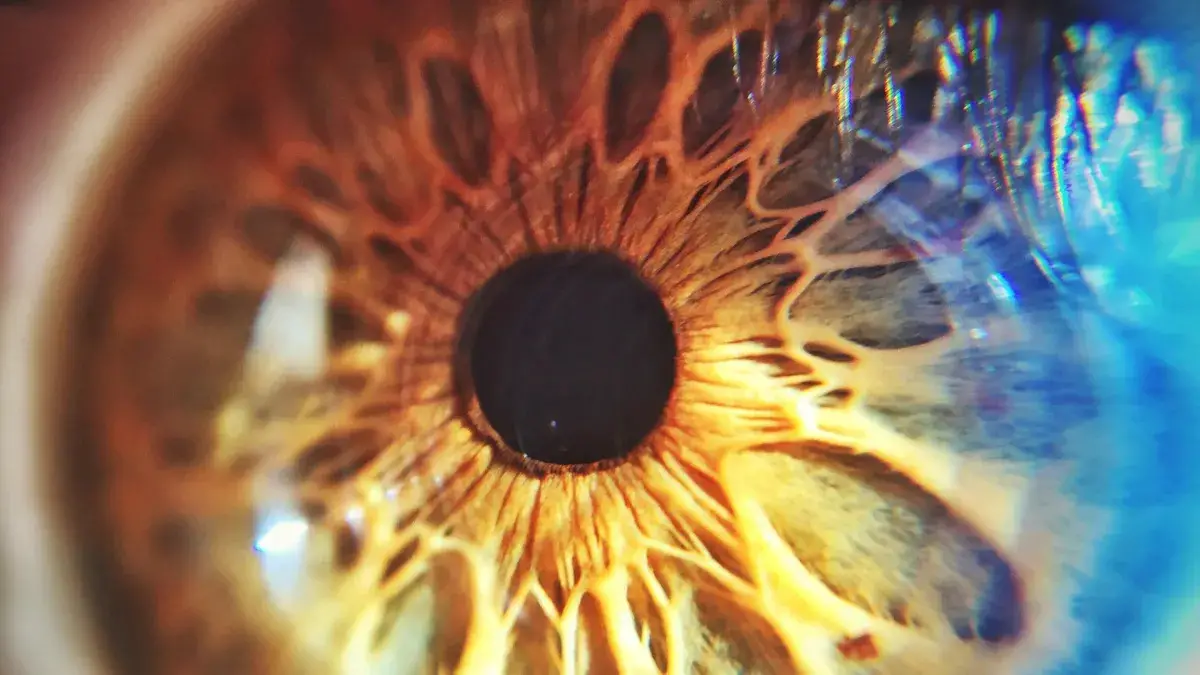Melanin Uses Quantum Reactions to Defend Eyes from Harmful Substances, Slowing Down Vision Loss with Age
Every flash of light that reaches our eyes impacts the delicate tissues in the retina, creating toxic by-products that could harm the cells responsible for vision. Fortunately, melanin, the pigment that darkens our skin, hair, and eyes, plays a crucial role in managing these toxic materials. A recent study by researchers from the University of Tübingen in Germany and Yale University has uncovered an unusual mechanism that allows melanin to protect our vision, involving quantum-like behavior.

The Retina’s Battle with Toxic By-Products
The retina, located at the back of the eye, is a light-sensitive layer composed of cells that transform light into nerve signals for the brain to interpret. Central to this process is a molecule called retinal, which captures light and initiates the conversion into visual signals. However, this first step is risky; when exposed to light, retinal changes shape in a way that can disrupt cellular function, effectively turning into a toxin.
To counter this, our bodies have evolved enzymes that convert the twisted retinal back to a safer form. Additionally, the retina is constantly renewing itself, replacing old light-sensitive cells with fresh ones. Despite this system, some toxic by-products slip through, and their accumulation can lead to conditions like Stargardt disease—a genetic disorder where a deficient enzyme causes toxic materials to build up, leading to vision loss in the retina’s focal point.
Even in healthy individuals, the breakdown process isn’t perfect. A toxic compound called lipofuscin can build up in the retina, forming clumps that harm vision over time. This buildup is particularly concerning in age-related macular degeneration (AMD), a leading cause of vision impairment in older adults. But researchers have discovered that melanin plays a role in mitigating this risk by breaking down lipofuscin in aging retinas.

Quantum Chemistry and the Role of Chemiexcitation
The exact process by which melanin breaks down lipofuscin has long puzzled scientists. Previous studies hinted that lipofuscin could be degraded when exposed to substances that create highly reactive oxygen forms, known as radicals. However, melanin alone doesn’t possess the energy to create these radicals due to restrictions imposed by quantum physics.
The breakthrough came with the discovery of a phenomenon called chemiexcitation. Chemiexcitation allows melanin to interact with other materials in a way that raises its electrons to a higher energy state, creating a loophole in quantum rules. This elevated state enables melanin to produce oxygen radicals, which in turn help break down lipofuscin.
“These quantum chemistry reactions excite a melanin electron to a high energy state and flip its spin, allowing unusual chemistry afterward,” explains Douglas E. Brash, a therapeutic radiologist at Yale. The process is akin to how bioluminescent organisms generate light, but in this case, it’s used to break down harmful compounds in the retina.
A New Hope for Vision Preservation
Researchers used advanced methods, including high-resolution electron microscopy, genetics, and pharmacology, to trace how melanin and lipofuscin interact. They demonstrated that melanin, through its quantum-boosted state, effectively aids in degrading lipofuscin, preventing it from accumulating to harmful levels.
This newfound understanding opens potential pathways for developing treatments for AMD and similar vision disorders. The study’s senior author, Ulrich Schraermeyer, an experimental ophthalmologist at the University of Tübingen, expresses hope for future therapies: “For 30 years I was convinced that melanosomes—the organelles in cells that create melanin—degrade the lipofuscin, but couldn’t identify a mechanism. Chemiexcitation is the missing link, and it should let us bypass the problem that AMD begins when the eye’s melanin declines with age. A drug that is chemiexcited directly may be a breakthrough for our patients.”
This research, published in Proceedings of the National Academy of Sciences (PNAS), not only reveals a surprising role for melanin but also underscores the complex interplay between biochemistry and quantum mechanics in the human body. By understanding how the eye naturally combats toxic build-up, scientists hope that new treatments can preserve vision as we age, offering a brighter future for those at risk of vision loss.
This research was published in PNAS.





My eyes must be still running DOS then.
I like how AI and robots have evolved as part of natural process of iron mixing with water….
I’ve been using an advanced health technology for a while now that has helped my body regenerate and age reverse in many areas so far, eyes included.
Science has really reached a new great height. Be excited and get ready for aging to carry a different meaning.
Quantum chemistry, also known as physical chemistry
Excellent blog here Also your website loads up very fast What web host are you using Can I get your affiliate link to your host I wish my web site loaded up as quickly as yours lol
dodb buzz I very delighted to find this internet site on bing, just what I was searching for as well saved to fav